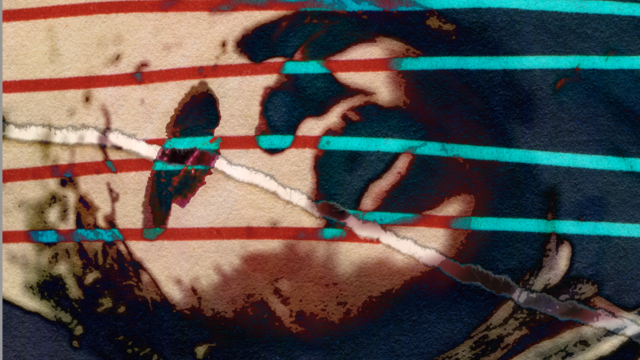ONIROGRAMAS – the notebooks of hermafróditos in the collections of the fondation fellini
a forensic interpolation by G.D. COHEN
The exhibitin was held at the Maison du diable from 22 September 2023 to 4 February 2024.
OPENING night September 21 at 6:30 pm
G.D. Cohen is a prestigious artist, curator and professor of film and video at UCLA (University of California at Los Angeles). His artistic work, which focuses on photography, film and video, has been exhibited worldwide, including in France, Bulgaria, Egypt and the United States.
G. D. Cohen worked in the Fellini Foundation Collection from June to September 2022, selecting various original documents referring to the Maestro's films. He will assemble them in an original and creative way, giving these archives a fresh perspective. This original and contemporary exhibition is organized in partnership with the Fondation Margherita in Sion, which organized G.D. Cohen's residency in Valais.

About the exhibition ONIROGRAMAS
Vadig de Croehling
Founding Director, REASArch
It is at once a privilege and a singular challenge to introduce the public to the work of G.D. Cohen, an artist I follow closely as one of his long-time collaborators at the group for Research on Experimental Accumulation and Speculative Archives (REASArch). A privilege, because I am always keen to endorse the ethos, the rigor, and the aesthetics of this most idiosyncratic visualist. A challenge, because his work can defy easy description and categorization. If at first his work may appear to resemble that of other artists who make discrete objects for us to contemplate and admire, it is never long before we suspect that Cohen’s true art is not to be found in the objects he creates.
Our suspicions, incidentally, are the entire point. Cohen’s artwork is always giving rise to something else entirely: to a soupçon of some kind of plot that has yet to find its story, has yet to comprehend itself as either transcription or invention; to a quasi-historical figure or event that seems to have stumbled into the setting of a film (a fiction film? or a movie masquerading as documentary?); always to an air of unfinished research, of an investigation gone astray, of the traces left by a scholar who has disappeared in the bowels of some obscure archive….
With ONIROGRAMAS, Cohen presents the preliminary results of what he calls his “speculative encounter” with the collections of the Fondation Fellini in Sion, Switzerland. For the purposes of the exhibition, these “findings” assume diverse forms: photographic works derived from certain kinds of documents and images found in the Foundation’s archives; modestly sized, outwardly figurative watercolors; large, abstract works of alcohol ink and graphite on vellum; a looping video; lengths of torn fabric hanging from the ceiling. In this regard, the work that Cohen offers here is not “about” the Maestro’s films as such: the viewer will search in vain for any artwork that provides a visual interpretation of Otto e mezzo or Satyricon or Roma or Casanova. Rather, Cohen’s project and its corresponding exhibition are about no more nor less than the Sion archives themselves, the word “about” here understood to mean not only “in connection to” or “concerned with” but also “around,” “near,” “adjacent to,” “a short distance from.”
Certainly, Cohen’s work for the exhibition arises from a series of rendezvous with the objects in the collections. More important, it stems from his own discovery in the archives in Sion of a mysterious set of documents: three small notebooks full of strange drawings in pencil and watercolors, interspersed with cryptic texts that derive from obscure sources: the ancient Homeric Hymn to Hermes; Ulrich Schmidl’s 16th-century chronicle of the first Spanish colonizing mission to the Río de la Plata in South America. Yet Cohen’s exhibition also hovers just behind (or beyond) the borders of these primary materials. Having spent much time peering into the archives from a certain remove, he has attempted to render what he has perceived from that particular vantage point: a boundary separating the visible objects within the collections on the one hand, from the invisible dimensions of those objects on the other, which can only truly be detected from the periphery itself, that is, from the borders (the limits) of the archive. It is to these invisible dimensions that Cohen has ventured to give material form, if only to alert us to the fact that such forms are not where the art is to be found. It is as if, having set out to paint a still life, the artist has resolved instead to paint only the stillness.
What the visitor to this exhibition may ultimately enjoy is the unique opportunity to continue the speculations inaugurated by G.D. Cohen. Who, or what, was Hermafróditos? What is an onirograma? How did the recently discovered notebooks orginally find their way to Sion? And what could any of these things possibly have to do with Federico Fellini, making his movies a half a world away, in Italy in the 1960s and 1970s?
As with any speculative venture worthy of the term, Cohen’s project will not—cannot—provide the answers to these or any other questions the visitor may pose. It is in the posing of the questions alone that the experience shall be made.
